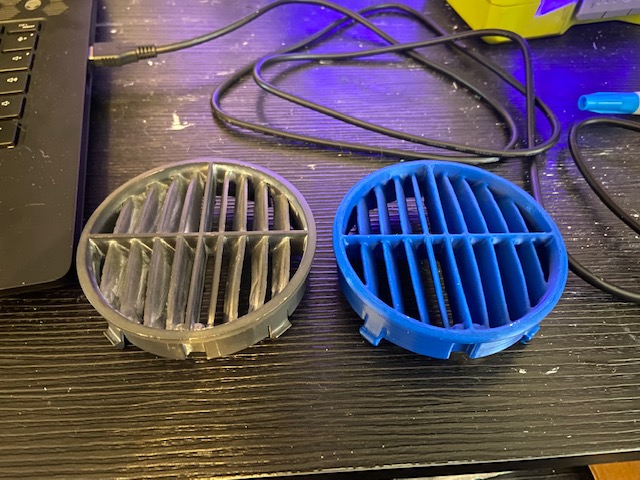In this installment of me removing rust I work on the mud flaps. They were in the way of me grinding the rust spots in the wheel well. So I removed them, and good thing I did. The driver’s side (port side) mud flap steel was nearly rusted through under the flap.
The pitting was impressive and the amount of rust stuck on the flap was amusing too. So instead of welding my rust holes in the wheel well I had to take a day to fix the mud flaps. I went ahead and did both sides. The passenger side (starboard side) did not exhibit the same amount of rust as the other.
I got them cleaned off and applied the Duplicolor Rust Preventative to them. This is the stuff that is supposed to take surface rust and transform it into “not rust”. Through the magic of chemistry this “paint” converts the rust to I’m guessing zinc? hell I don’t know I got a “D” in Chemstry 1 and Chemistry 2 at the University of Oklahoma. In my defense, I drank more than I studied, and I had a nearly full-time job, and served a weekend a month as a Field Artilleryman in the USMCR.
Whatever, it’s magic and I’m not likely to do that job again on this Range Rover. Once I’m ready to reinstall them they will also receive a coating of rattle-can bedliner/rhino lining/stone seal or whatever they call this stuff in other countries.
The week had a lot more work done and filmed but I’ve run out of time as it is now Sunday. I’ll post another video this week of the rust cutting and removal under the fender well.
As we say here in Oklahoma, my hands and knees and back hurt “something fierce” [Merriam-Webster]. I haven’t done this much wrenching/grinding/hammering in at least a year. I ain’t gettin’ any younger so I gotta play through the pain.
Thanks for reading and Happy Rovering.






